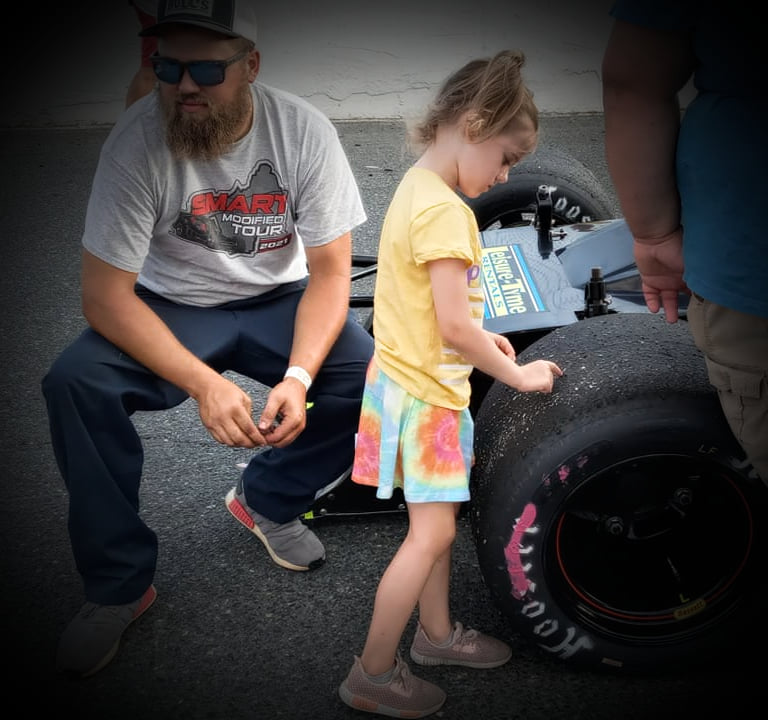
By now, as a short track racing fan, you’ve probably already heard a little bit about the current racing tire shortage. But even if you haven’t, we are going to touch on why this is a bigger deal than you might think. We first became aware of this issue at racing events last year in the 2021 season, and we started to keep our eye on it. We also thought about doing a piece on it then, but at the time, there were other reporters mentioning it, and we here at Short Track Report wanted to give the tire manufacturers that produce the racing tires time to deal with the issue before we reported on it. And honestly, I thought that they had their hands around it, and in the offseason, they would be able to rectify the situation. But, we started to do our research, and we reached out to the two biggest short track racing tire manufacturers that produced the tires for our region.
We weren’t surprised that we didn’t get a response however, as again, we knew they had an issue at hand. But, we’re persistent, and so we continued reaching out for a comment from them. For over a year, we heard nothing, but again, we don’t give up easy when we know it’s important, and so we began trying different avenues of contact. We were determined to get a quote from someone in the big two as to what they planned to do to correct the problem for the future, and we continued to keep an eye on the situation. We watched as short tracks in our area started altering and adjusting their tire rules, and event dates and schedules were changed as the short tracks adjusted to the situation. And we lamented when we saw cancellations, and in some cases, tracks shortening their schedules and/or ending their seasons early. But again, 2021 was a coming back year from the pandemic that put supply chain issues for the nation front and center.
It wasn’t even apparent that the tracks that shuttered or opened to partial schedules in 2020 would even be opening for full seasons in 2021. But thanks to tracks like Ace Speedway, and later tours like the SMART Tour, it was proven that you could hold local events and still prevent pandemic spread. They are not given enough credit for it, as they endured extreme scrutiny and push back as they pushed forward and proved that you could have safe events outside, and the rest of the region paid attention, and the tracks and series started coming back into full action. For many tracks, there was not much of an option, as racing venues are businesses after all, and they can’t sit around long without making money before it puts the business itself into jeopardy. And the tracks had already endured over a decade of a downturn in attendance, and so they were eager after the shutdowns to get back to business. It was crucial.
And so, we felt that maybe the tire companies, who had endured labor shortages, supply shortages, and a year of near nothing sales, had made the necessary adjustments to deal with the shutdowns, and there was no word otherwise that they would have issues when the demand started to return to normal, but still, we knew they would be sluggish getting back up to speed. But also, we know now that they did make a miscalculation on the supply demand. They prepared for 2021 on the assumption that tracks would again need a limited supply.
It was an understandable assumption however, as the tracks first reordered taking into account the extra supply they had in stock from a season that saw little to no racing during the pandemic shutdowns. And they were planning to work through the season as best as they could to meet the limited supply orders they expected while also moving to work through the labor shortage and supply chain issues they were faced with as the nation moved back to normalcy. But then as the tracks began operating at full schedule, they began ordering at known capacity. So know, we did not write this article to bash these companies or even to place blame.
But we know it’s time for us to address the tire shortage for what it is, to inform you the fan on the issues that compound the situation, and to offer what we think may be some answers moving forward on how to remedy it.
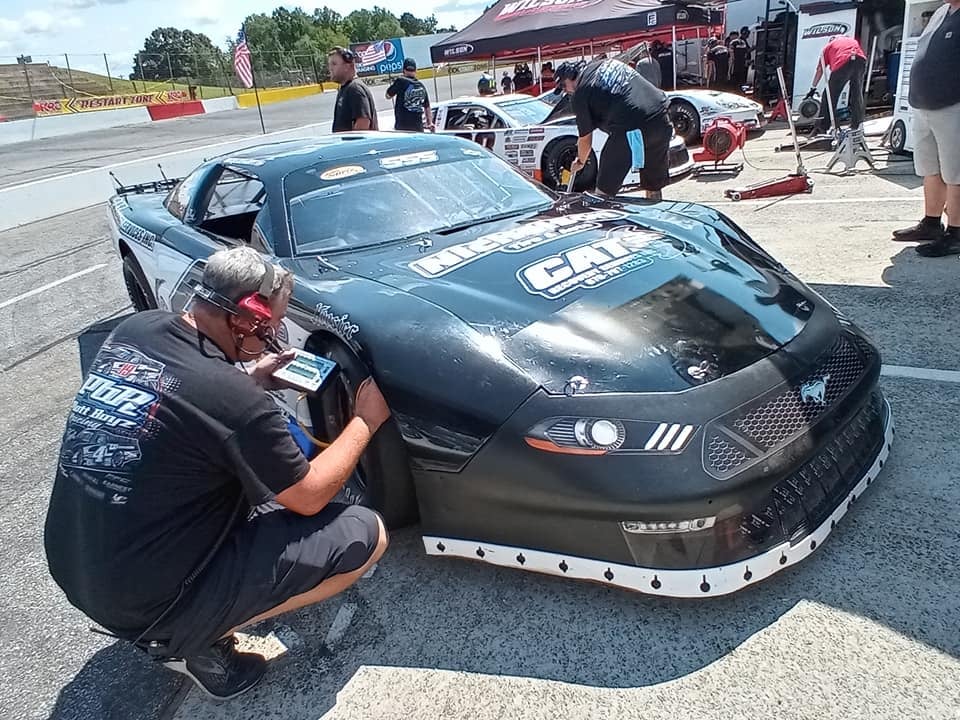
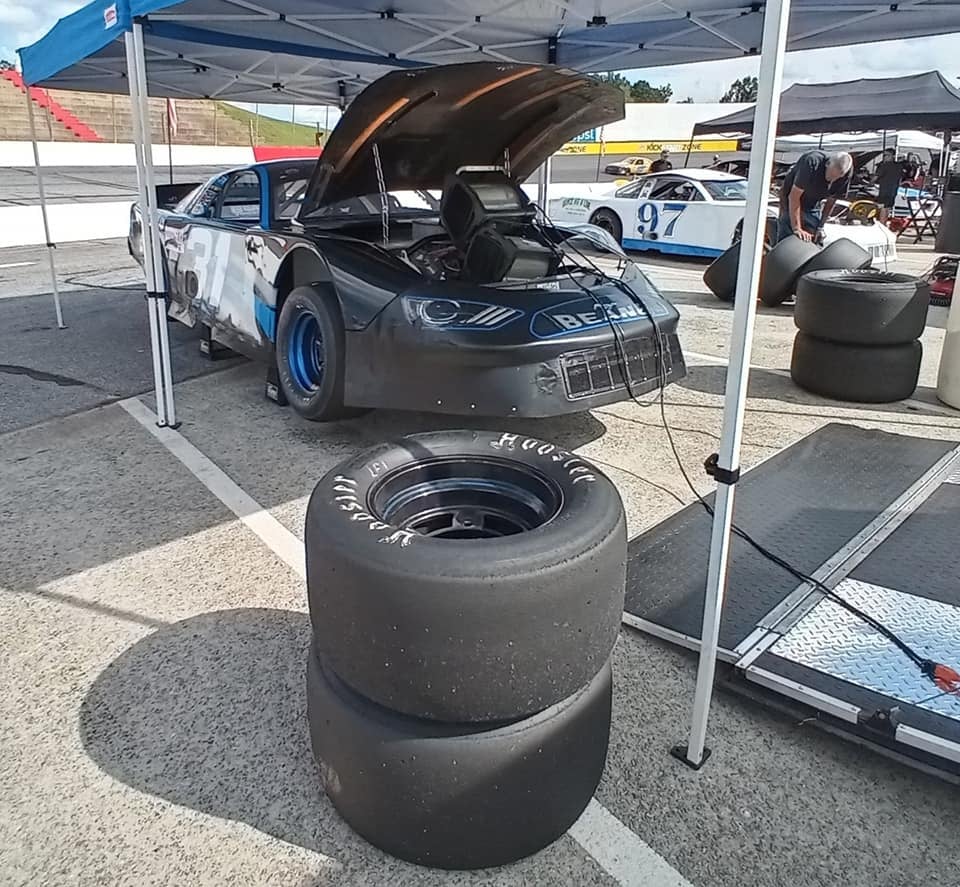
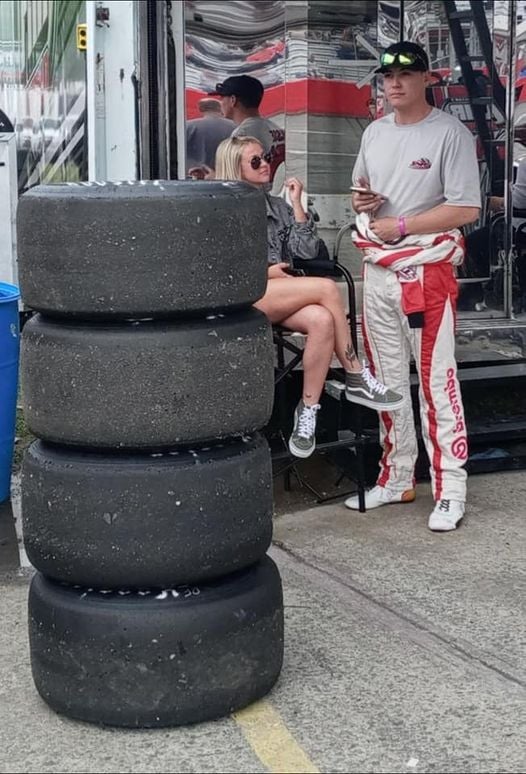
First of all, we need you to know that this is indeed a major issue. And again, we know that many of you are aware of the shortage, and the observant are becoming increasingly understanding that it is a major issue. And as I stated, we are not here to just report it, as many have already done that for you. But we’re here to tell you that this is an issue, that if not met with the correct solutions, could be an issue that could derail the current regrowth of short track racing on the whole. I don’t say this lightly. And as we moved to write this article, we have seen the top players treading lightly around this issue. Also understandable however as many that have reported on it are embedded into the sport with entities that don’t want to put a bad light on the manufacturers.
After all, we have already stated that they are working hard to meet demand, and they are after all manufacturers that the short track racing community had relied on for years. And again, we are not here to point a finger of blame at them either, but we are in a position as independent reporters to delve deeper into the problem. And to do so, we can’t tread lightly around the issue. Too much is at stake here. We so have to keep into consideration that we must keep ourselves in a position of growth as we gain greater coverage access, but we feel that good honest reporting will keep us where we need to be. And in that vein, there were three red flags that bring us to know that now is the time for us to report on the issue ourselves.
First, at the end of 2021, we watched as the CARS Tour moved to a harder tire compound for their season finale at South Boston. Maybe to some not that big an issue as the tour and it’s tire manufacturer Hoosier Tires easily moved to the correct solution to the shortage of tires available for the championship event, but it was the fact that the most prestigious tour in the region had to make the move at all. And later in the article, it will become clear why that was a bigger deal than what was noticed on the surface of it.
Second, Langley Austin, founder of the RACE22 racing media outlet wrote an article on the topic just a short while ago. While RACE22 is a trusted and informative short track racing coverage entity and have been for several years, the fact that Langley Austin himself wrote the article was what got our notice. As I stated above, other outlets as well have touched on it, but Austin is also the owner and promoter at Franklin County Speedway. So, this is not only a reporter, but a promoter reaching out to the racing community to bring the matter to the forefront. That’s more telling than you know. A promoters job is to also be a hype guy for the entertainment that their tracks provide, and so naturally staying away from any negativity is a part of the business of promotion. So for Langley Austin to take the time to even pen the article is a red flag for us, and should be as well for anyone else paying real attention.
And thirdly, just as we were finally getting responses from the tire manufacturers themselves, Greenville-Pickens canceled their 2022 season opening event. Just the red flag we didn’t want to see, but the one that confirms that this is indeed a dire issue that must be corrected immediately. Season openers are shows that in a large way help to define a tracks season. Even though it’s the first event of the year, just like Daytona is for NASCAR, a local track’s season opener sets the tone for the year. And what can’t be ignored also, is that the weekly season hasn’t even begun yet for most tracks, the tire issue is already an issue, effecting growth and sustainability. So, what’s the real cause of the issue and how can it be rectified? Well, let’s start with those responses from the tire manufacturers themselves.
Hoosier: (Chad Wright/Asphalt Oval Product Manager)
“The tire shortage issue is going to be roughly the same as it was in 2021. Asphalt tires are not the only problem, it is all racing tires. Due to labor shortages and getting raw materials on time when needed is what is causing this whole issue. This really should not be a surprise to anyone as this is a global issue with many products, not just tires. Teams and sanctioning bodies are going to have to be really careful on tire consumption. Our goal is to try and get everyone as many tires as we did last year, and if we can do more, so be it. There are no promises with the way the economy is right now. We at Hoosier are trying our best and working 6-7 days a week to provide tires to all of our customers.”
(We also reached out to General Tire and they responded with: “Continental owns both Hoosier and General Tire. We’re in the same boat.” We felt no need to contact Continental as it was obvious we would get the same response. )
American Racer:
(To this date we have gotten one message – “Replies are generally received within 24-48 hours.” To this date, we haven’t received a response, but we’ll keep trying and keep you updated.)
So let’s break down Hoosier’s response just a bit. We agree on the no surprises, but, we are a little surprised that they don’t think they’ll be able in the near future to increase production, and that they were at least honest about it. While it’s understandable, we know that to mean no growth. That’s not lost on us. But let’s continue. We also believe they are working as hard as they can to rectify the situation, but the wording of the quote indicates they are not making much ground at the moment and point to the economy and supplies as the reason. Again, not surprising.
But, let’s also go a little deeper here. First of all to note, Continental is the bulk producer of racing tires. American Racer is an alternative, but although we haven’t received a quote from them as of yet, we can tell you that all indications are that they are not taking on any new customers. We’ll wait for them to tell us why but we suspect it it is a similar situation to that of Continental. Now, we’ve heard from a lot of our sources about the supply chain issues being related to nylon, or other materials used in the making of tires. But we wanted to look deeper into the supply issues because again, we not only want to report on the issue, we as reporters needed to take a good closer look.
First though, what is obvious, is that a lack of competition may be a hamper on a solution, and I feel I need to point that out here. As in Hoosier’s statement, they pointed out that there are other supply issues besides tires for racers, tracks and promoters. And we have watched the central east coast short track racing region deal with those issues. And they are going to get worse as well, we agree. But, the racing community is remarkably adaptive and creative, and should be applauded for the way they’ve dealt with not only supply issues, but rising cost as well.
But they’ve learned to deal with adversity, and have became masters at overcoming it over the past decade and beyond. But tires are out of their hands, and as a note to my point, tracks have not been canceling for supply issues of any other kind. But obviously a lack of racing tires is going to put an end to any event. And so, even though they’re right that supply issues affect every area of what it takes to go racing, a supply of tires is crucial to putting on any event. So let’s take a greater look at the true material supply issue when it comes to tires as also what should be noted is the uniqueness of the materials used to make tires versus other materials needed to go racing.
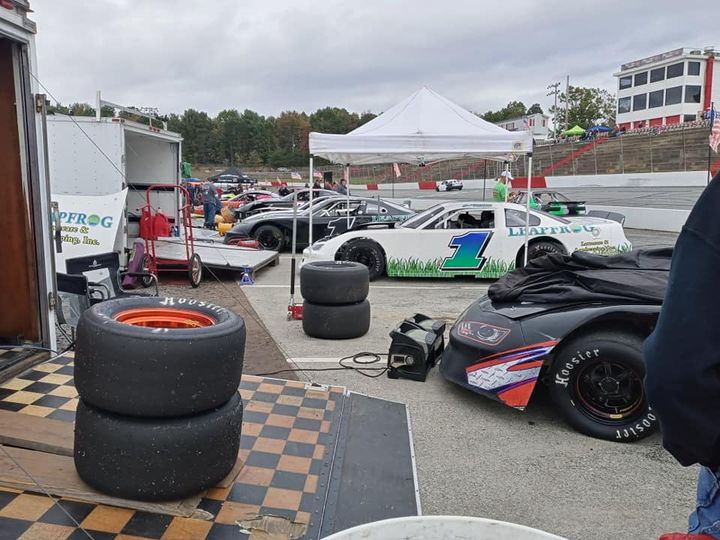
First of all, it’s important to know a little about what goes into making a race tire and the materials needed, because in this case a trend becomes apparent, and we feel it’s quite important and needs to be pointed out. Yes, nylon is one of the ingredients that has supply chain issues, but it is only one component. It’s used as a fabric to reinforce the tire along with the main flexible elastomer material such as rubber. To note, nylon is a plastic made from crude oil developed by an intensive chemical process that results in the long stretchy materials that make it a very useful fiber. Other such fibers can and are used in high grade racing tire production such as Kevlar.
China of note, is the largest producer of nylon at 1.28 million tons. In comparison, North America also produces nylon, but in 2021 produced only .055 million tons. But Europe is also a large producer and in competition with China at 1 million tons.
Also to note here, is that as far as rubber, synthetic rubber such as Styrene Butadiene can be used as a substitute in part for natural rubber to offset competitive raw materials cost. A component named Carbon Black forms a high percentage of the rubber compound. It provides reinforcement and abrasion resistance. It is used with Silica to produce these qualities which are essential in a short track stock car high performance racing tire. And again, the main producer of this compound is China, as is the case with the Silica it’s made with.
But to note, this material is also made in the United States by companies like Van Horn, Mertz & Co., Inc in Pennsylvania. We found that they are one of at least over forty-seven other manufacturers in the USA. Zinc Oxide is also used in tire production as an activator that assists in the vulcanization or hardening of the rubber. The main supplier of this material is of course China, but, we found in our research that there is growing competition with now even smaller vendors coming into play in the market to the point that one leading researcher was quoted as saying: “Major Zinc Oxide players worldwide have increased their research and development spending to reduce the manufacturing cost to gain and maintain a competitive edge and market share, leading to innovation and development.”
You see, the point I’m getting to here is that the supply issue in a large part, is that short track stock car high performance racing tire production depends a great deal on resources that are largely gathered from China in a move to gain access and lower cost on the materials needed in production. And during the pandemic, China was locked down and production came to a trickle, and added to this issue was the fact that shipping also grinded to a crawl all across the Pacific, and to this day supply chain issues are a true and effecting detriment to production. Large supply and low cost is of course a great company plan, and no one can blame the tire companies for gaining material in an effective manner. In fact, again, we find no fault at all with Hoosier, and ultimately Continental and agree with that part of their statement. They were faced with conditions out of their control.
But, what should be brought to attention is that no growth is not an option in today’s regrowth of the local regional short track racing scene. For as you know, we have stated our observation of large regrowth in our area for short track racing, which has been met with growing attendance and fan interest in a trend that is a bigger deal than anyone has been reporting on. And it has led to new touring series even for this year. And what should be hailed as a great thing, encouraged and supported fully, will now also come with a ripple effect that is already being felt. All of this shouldn’t be understated. But let’s look again at a part of Hoosier’s statement: “…Teams and sanctioning bodies are going to have to be really careful on tire consumption.”
Again, we fully understand Hoosier’s statement, but, a healthy short track racing scene cannot have restricted growth in the middle of real growth that needs to take place for overall advancements. What needs to be taken into account, again, is that short tracks are the foundation of stock car racing, period. And when you start to chip at the foundation, the house starts to fall away, no matter how slowly. And this foundation has been tested for a while now, and has stood firm.
And so while we understand the position of Hoosier, the clear leader in short track racing tire production and for good reason, we feel that there are three things that either one or all need to happen to avoid what could be irreparable harm to the growth that we have been witnessing for the last few years. Now we don’t claim however to be experts in tire production or marketing, nor are we experienced track promoters that have all the answers. But our message here is that something has to be done before real consequences occur.
We do however understand that sacrifices have to be made, and there is no magic wand. But if we feel like something should be done, we would be copping out if we didn’t offer a few solutions. We’re optimists. So where some will say there is no way, we know otherwise. So while you may not agree with our proposed ideas, and we acknowledge your ideas may be completely different, the point is that we should agree that there may be solutions to this, and that we should be vocal about said solutions.
First, all of the areas tracks, series, and promoters have to work together to manage the supply they are given, and work together for solution to make the most of what’s available. Now that’s a taller order than you might think as tracks, series, and their promoters are all competitors actively competing in a competitive sport. In competition, rivalries occur. But I’m happy to report that we have observed remarkable cooperation already. It’s to be applauded and called out. And they may not even know it, but there is a lot of respect out there for each other that’s been forged by the challenges the last decade have brought. The racing community is indeed a family in that respect.
And what they may see as a dysfunctional family in the promoter realm, what should be known is that for the most part they do what they do for the love of racing, proven by their toughness over the last decade and beyond, and what’s lost on some is that during those years, they still managed to produce stronger and stronger developing competition that has led to the intense competition that NASCAR now benefits from.
So on count one, we can say to you now in full honesty that promoter cooperation is happening in surprising and uplifting ways. We can only hope this continues, because in our opinion, it’s what makes our region’s short track racing scene strong at it’s core.
Second, and this is where we were advised by many to tread lightly by those who know our aspirations, we have to make a plea if you will. But, we can’t tread lightly here at all. We have to be vocal and hope the merits of what we say here is taken in full context. Let’s just get this part out of the way first…NASCAR is indeed the pinnacle of stock car racing. It has been since stock car racing became organized and sanctioned. And no matter the argument that may come from some, that fact is no different today that it was at it’s heights. But for some, and NASCAR I hope already knows this, it seems that NASCAR has forgotten, even if just a bit, where it came from. It had been said that NASCAR has forgotten it’s roots, and even tries to hide it to some extent.
But we here at Short Track Report have grown up NASCAR fans. We know it’s importance to us, and that’s the view we know. And recently, after being honestly quite skeptical about the vision NASCAR was pivoting towards, a bit apprehensive about the new car but patiently waiting to see what they were working on, I, after looking with open and learning eyes, saw it.
From that point on, we could feel it. And once it came into vision a little better, we get what they are going for, and we have to say, we like it. We know this is what the sport needs to build on for the future. We know how long it took. And while we listen to stock car fans criticize you as attendance fell during a period through the years, we stood by you. We knew what you were doing. And we watched as you recovered from the biggest shock you had to deal with, and one you couldn’t have prepared for. The unthinkable.
And as the sport reeled, dealing with the shock and looking for direction, we watched you find your way. And while many still don’t give you the credit for what you have done, we watched you secure a legacy that goes unnoticed. I believe that because of your actions, Dale Earnhardt’s legacy became even more than the greatness he achieved as a driver in the sport. A driver many will tell you to this day was the best that will ever be. And while he could never be replaced, and that’s a fact that haunted the sport silently for many years, Earnhardt’s greatest legacy may be all the drivers he’s saved over the last years, and far into the future.
The safety levels that have been achieved for today’s competitors is amazing. One could almost say miraculous. It’s the kind of thing you can build a future on. And we even find it quite ironic, that while you work out the bugs on the new car, the biggest to emerge is a tire issue. One me and Josh silently knew you would have to face by the way, but I digress. But we know this will be resolved, as you have the resources, the know how, and the overall clout to get things done the right way. We have no doubt you’ll figure it out. But while you do, we have a request. We can only hope someone that has real connections with the powers that be in your organization alert you to it, or at the least you come to know of it somehow, as we feel it is a reasonable but hugely important request.
Dear NASCAR,
Over the last few decades while you have went through three new cars, numerous rules changes, and now even how ownership is formed and managed, finding your way into the future, during which a downturn in attendance and standing took a toll on the sport of stock car auto racing, your foundation never left you. And that foundation oversaw the racer development that you are now putting to good use in what is becoming the most competitive era in stock car racing history. Talent that’s been forged from where it has been from the very beginning. And now that foundation is seeing a regrowth that what we feel could lead it even to the days of NASCAR’s former glory days.
That foundation has worked to promote the sport through the worst adversities it could have faced and it not only dealt with it, it has put itself in a position to regrow. But now it is faced with something beyond it’s control. And it needs your clout, your means, and your resources to help it face off what could be extremely detrimental to it’s well being.
It’s time for the #mytrack # myroots to mean something in a bigger way. You are the real experts at getting the resources you need, as shown as debuting a new car in the pandemic, with new everything, including tires. And we know that the tire supply that is in place today is ruled in great part by NASCAR’s presence, ruled by it’s contracts and associations throughout the stock car production industry, including manufacturers themselves. And with that kind of clout, the conversations of “What could NASCAR even do to help…” shouldn’t even be entertained.
NASCAR can get done what it wants done and it’s proved that over and over again. So, we request that you move to help the foundation that you have built on from your inception. We urge you to stop the bleeding, knowing that the status quo is unsustainable and detrimental. Stopping growth to us is not a good enough option. And, race fans are going to be watching. They won’t be blind to closing tracks and canceled shows, and I promise, they’ll wonder why you didn’t move to stop it. On the other hand, they’ll also see if you take action.
NASCAR fans are made at short tracks, and so are teams and drivers. It shouldn’t even have to be requested for you to take positive action, for I promise if you take a good look at it, it’s for your benefit in the long run if you do. The short tracks are sounding the alarm, and we only hope for everyone involved that you hear the sirens and respond. You are the best answer, and truthfully, everything else becomes questionable.
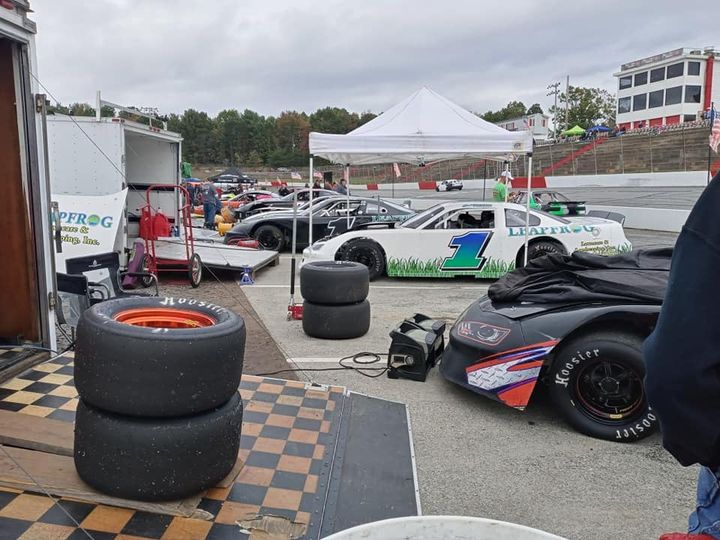
So, option one is already in play, and option two realistically may not even be on the right people’s radar unfortunately, which brings us to option three. There was a reason I mentioned earlier where and why tire materials are in a huge way outsourced for supply and cost reasons. But, we found true evidence of material provider alternatives that are becoming increasingly competitive in the market, and we know because of today’s economy that it is out of necessity. The markets are going to be shifting. And in good measure due to the supply issues that have been exposed by the global market. And countries are finding that the world isn’t as set as they thought they were and that the global market is vulnerable.
It’s going to be crucial for countries to buy products and goods made where they can control supply. Accessibility is going to be more of a focus. And though it may not seem so now, I predict that includes the petroleum market as well. And I predict there will be a real call, even in government itself for regional goods that aren’t so vulnerable in the global market.
And so a smart businessman, seeing these favorable conditions could take advantage of the coming trends and make themselves a real player in the soon to be re-emerging American crude oil market. For even if we do choose to transition to electric in even greater ways, smart people are going to realize we need a strong petroleum market to get a true sustainable transition. And it doesn’t take a scientist to look around and see what I’m saying here is true. And so it isn’t too far fetched to see that the timing is right for a market correction. And it is one that a new racing tire development could find very favorable.
We found evidence that in every material used to make a fast, durable racing tire is largely produced in China, but that a growing competitive market is already forming. And new material makers know it’s crucial to show off the value of their product. Let’s just say that the economic market is becoming increasingly favorable for competition. And in a capitalist society, competition increases availability, that in turn leads to increased supply. And if option one starts to change due to having to compete to survive, and option two is ignored, we can see how option three could become a real opportunity for the right businessman. And though research and development would be a daunting task, the coming market turn could make competition a real viable reality.
Now of course, we know that you may not agree with any of our solutions, and maybe you know a better solution to the short track tire shortage, and maybe of course Hoosier has a course of action that corrects the tire supply shortage issues in the future, but taking them at their own words, at this time, it doesn’t look like a fix is in the works soon unless something changes. But to us, we don’t accept the option of settling for no growth. And we want to inform the people paying attention that there will indeed be more cancellations and adjustments going forward until supply and labor issues are addressed in a way that moves the market forward.
We are far from the only view on this matter however, and we have heard many differing opinions. So we also wanted to get the take of those in the industry and we’ve been listening to them over the past year, and we feel we can sum up the main opposing views from those who compete in the short track racing world. And we found those opposing views perfectly represented by a couple drivers quotes we received:
Late Model Stock driver Daniel Schadt:
“I’ll be honest with you. These cars cost too much money to run on a scuff tire. My thing is, how old are these scuffs? Because if guys have good scuffs, thy’re gonna keep them for themselves to practice on since we can’t buy new tires to practice on. So, again, how good are the scuffs? As far as setup, the scuffs are a little harder, which usually means you have to soften them up, but I’m not sure with this whole riding on bumps deal. I’m not setup that way, so my setup might be a little different than others. The scuffs just don’t have the grip, so they rely a lot more on throttle control. I just don’t think Late Models should be on scuffs and if it comes to that, my stuff will sit at home until it gets worked out.”
Limited Late Model driver Jacob York:
“Driving on the older tires is more of my style. As much as us drivers enjoy having fresh tires, I personally enjoy racing on scuffs. I feel it puts it more into a situation where tire management is key, even in a fifty lapper. Honestly scuffs seem to make race day easier, especially to the teams on smaller budgets.”
When we formed Short Track Report just a short time ago, we couldn’t see any real adversity to the growth that had embraced short track racing. But the pandemic changed everything. The effects will be felt for many years to come. And while the short tracks have and are dealing with many issues that are hard to manage, they have been resilient in meeting those challenges. And although they are working through all kinds of supply issues on literally everything, a lack of tires is something tracks and promoters can’t overcome leading to canceled events.
There is also the possibility of safety issues as more and more used tires come into play. And so we know there will be more to report on this issue moving forward, but we’re finding it hard already to deal with the fact that at a time when the rubber needs to hit the road, we can only hope there is enough rubber to go around. In the meantime, the professionals in the sport will move forward and the season will be filled with great exciting racing, let there be no doubt.
And so the tracks need your support now more than ever, and besides, it is going to be interesting to say the least to see how it all plays out. ‘Till next time, see you at the track!




Leave a Reply